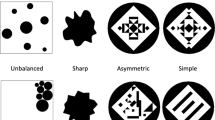Abstract
This study investigated the influence of two music elements, mode and rhythm, on melodic imagery. By modulating different parameters of mode and rhythm, this study produced various melody samples. Kansei engineering was adopted as a research method for designing the experimental process. A set of music assessment rules was established by regularizing the existing modes and rhythms and analyzing and comparing their differences. The results were applied to automated composition in order to develop a comprehensive automated composition system. Before the hearing experiment, 39 adjective pairs were selected for the survey of melodic imagery by reviewing literature and engaging in discussions with experts. A Markov chain was adopted for analyzing the current modal music to establish a Markov switching table for the Chinese pentatonic scale, and metrical complexity was used for generating rhythms. Finally, 30 music samples were produced using the automated composition system by applying the various combinations of modes and rhythms. The hearing experiment was conducted on 35 participants for examining their perception of melodic imagery. Item analysis and a reliability test were performed on the experimental data for eliminating invalid samples and items. Thus, 14 adjective pairs with a Cronbach’s α of 0.887 were obtained, indicating favorable reliability. In addition, this study involved conducting factor analysis and extracting three imagery factors, namely passionate–apathetic, beautiful–ugly, and romantic–rigid. Subsequently, multivariate analysis of variance was conducted in this study for determining the relationship between modes and metrical complexity and the 14 adjective pairs, and the estimated means were calculated. Multidimensional scaling was adopted for producing a two-dimensional perceptual map for the construction of a database. The experimental results of this study showed that modes and rhythms in music can effectively help musicians or computer composition systems compose melodies that create various perceptual imageries.






















Similar content being viewed by others
References
Cronbach LJ (1951) Coefficient alpha and the internal structure of tests. Psychometrika 16(3):297–334
Farnsworth PR (1954) A study of the Hevner adjective list. J Aesthet Art Criticism: 97–103
Gabrielsson A (1973) Similarity ratings and dimension analyses of auditory rhythm patterns. 1. Scand J Psychol 14(1):138–160
Gabrielsson A (1973) Similarity ratings and dimension analyses of auditory rhythm patterns. II. Scand J Psychol 14(1):161–176
Hevner K (1936) Experimental studies of the elements of expression in music. Am J Psychol 48:246–268
Hiller LA, Isaacson LM (1959) Experimental music; composition with an electronic computer by Lejaren A. Hiller, Jr. and Leonard M. Isaacson. New York, McGraw-Hill
Ishihara S, Nagamachi M, Masaki J (2011) Music and Kansei: relations between modes, melodic ranges, rhythms, and Kansei
Jindo T, Hirasago K (1997) Application studies to car interior of Kansei engineering. Int J Ind Ergon 19(2):105–114
Keith M (1991) From polychords to polya: adventures in musical combinatorics. Vinculum Press
Lerdahl F, Jackendoff R (1985) A generative theory of tonal music. MIT press
Livingstone SR, Brown AR (2005) Dynamic response: real-time adaptation for music emotion. Paper presented at the Proceedings of the second Australasian conference on Interactive entertainment
Longuet-Higgins C, Lee C–S (1984) The rhythmic interpretation of monophonic music. Music Percept: 424–441
Morris RD (1987) Composition with pitch-classes: a theory of compositional design. Yale University Press New Haven
Nagamachi M (1995) Kansei engineering: a new ergonomic consumer-oriented technology for product development. Int J Ind Ergon 15(1):3–11
Nagamachi M (2002) Kansei engineering as a powerful consumer-oriented technology for product development. Appl Ergon 33(3):289–294
Papadopoulos G, Wiggins G (1999) AI methods for algorithmic composition: a survey, a critical view and future prospects. In: AISB symposium on musical creativity. Edinburgh, UK, pp. 110–117
Pearson K (1901) On lines and planes of closest fit to system of points in space. Philos Mag 2(11):559–572
Sangenya T, Fujisawa TX, Nagata N (2008) Creation of a sound-image scale-Quantification of the images of chord progressions with impression evaluation used. In: Systems, Man and Cybernetics, 2008. SMC 2008. IEEE International Conference on. pp. 1905–1909
Scherer R (2005) What are emotions? And how can they be measured? Soc Sci Inf 44(4):695–729
Schubert E (2003) Update of the Hevner adjective checklist. Percept Mot Skills 96(3c):1117–1122
Toussaint G (2002) A mathematical analysis of African, Brazilian, and Cuban clave rhythms. Paper presented at the Townson University
Toussaint G (2002) A mathematical analysis of African, Brazilian, and Cuban clave rhythms. In Bridges: mathematical connections in art, music, and science. Bridges Conference, 157–168
Tung J-S (1981) The Chinese music meanings study (in Chinese). Chinese Music News Magzine, Taipei
Weaver E (1939) Syncopation: a study of musical rhythms. J Gen Psychol 20(2):409–429
Xenakis I (1965) Free stochastic music from the computer. Programme of stochastic music in Fortran. Gravesaner Blätter 26:54–92
Acknowledgments
The authors are appreciative of the support from the National Science Council Projects of Taiwan: NSC 101-2410-H-155-033-MY3 and NSC 101-2627-E-155-001-MY3
Author information
Authors and Affiliations
Corresponding author
Rights and permissions
About this article
Cite this article
Huang, CF., Lian, YS., Nien, WP. et al. Analyzing the perception of Chinese melodic imagery and its application to automated composition. Multimed Tools Appl 75, 7631–7654 (2016). https://doi.org/10.1007/s11042-015-2686-2
Received:
Revised:
Accepted:
Published:
Issue Date:
DOI: https://doi.org/10.1007/s11042-015-2686-2




